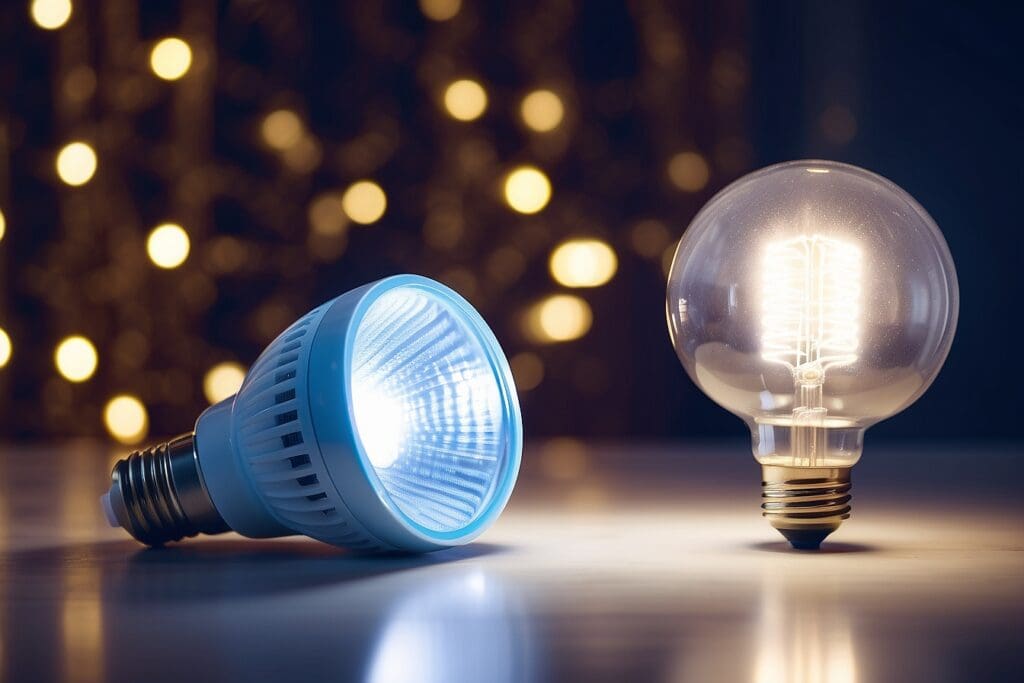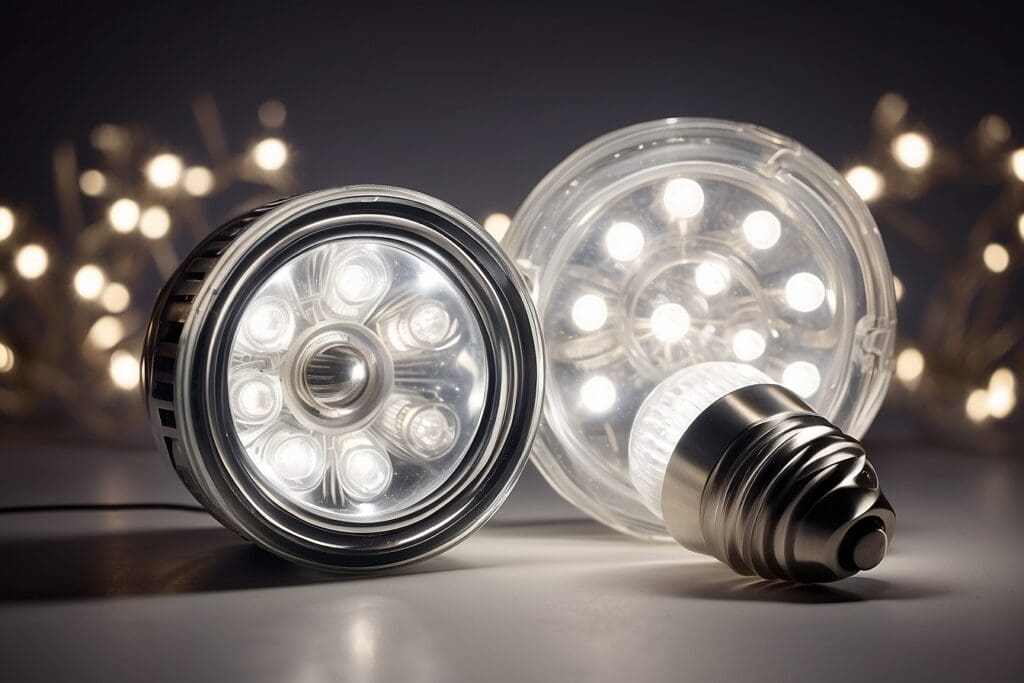Light emitting diode (LED) light bulbs were initially touted as the sustainable answer to incandescent light bulbs. In Europe, incandescent light bulbs were banned in 2009, while in the United States, nearly all incandescent bulbs were banned by 2014.1 However, now people are questioning whether LED light bulbs are truly the light bulbs of the future.
What are LED light bulbs?

LED light bulbs produce visible light when an electrical current is passed through them, just like other light bulbs. However, a “white” LED light does not exist. To emit a white light, different color LEDs are mixed or covered with a material that converts the light (this is the yellow material you sometimes see on LED products). Common LED colors include amber, red, green, and blue, which makes LEDs an excellent option for uses such as traffic lights or electronics’ power buttons.2
Another way that LEDs differ from incandescent and compact fluorescent light bulbs is that LEDs emit light in a specific direction. Incandescent and compact fluorescent light bulbs (CFLs) ![]() emit light and heat in all directions. Therefore, LED light bulbs often have an A-shaped design so that they can emit light in all directions.3 Given that LED light bulbs don’t emit heat like other light bulbs, heat is drawn away from the bulb via a heat sink. The heat sink keeps the LEDs from overheating and diminishing light output over time. The higher the temperature of the LED, the shorter its lifespan will be.4
emit light and heat in all directions. Therefore, LED light bulbs often have an A-shaped design so that they can emit light in all directions.3 Given that LED light bulbs don’t emit heat like other light bulbs, heat is drawn away from the bulb via a heat sink. The heat sink keeps the LEDs from overheating and diminishing light output over time. The higher the temperature of the LED, the shorter its lifespan will be.4
Benefits of LEDs
While researchers are growing concerned about the real impact of LEDs, there are a few benefits that made them a popular option in the first place:
- Long-lasting – The lifespan of a high-power white LED ranges from 35,000 to 50,000 hours, compared to 750 to 2,000 hours for incandescent bulbs and 8,000 to 10,000 for CFLs. The lifespan of a LED bulb is measured by not when it burns out, but when its brightness falls 70%.5
- Low temperature – Incandescent bulbs waste 90% of their energy on emitting heat, while CFLs waste 80%. LED bulbs give off light in a certain direction, making them more efficient.6
- Size – LEDs small size means that they can be used in spaces that are too small for conventional light bulbs.7
- Durable – Since LEDs do not have any glass components, they do not easily break like conventional light bulbs.8
Downsides of LEDs
As LEDs become more widely used in day-to-day life, researchers are starting to wave red flags. First, it was widely advertised that LEDs were superior because they did not contain mercury. However, LED lights do contain concerning amounts of lead, arsenic, and nickel. Oladele Ogunseitan, chair of the University of California-Irvine’s Department of Population Health and Disease Prevention, said, “LEDs are touted as the next generation of lighting. But as we try to find better products that do not deplete energy resources or contribute to global warming, we have to be vigilant [about] toxicity hazards.” Ogunseitan recommends that if LEDs break at home, clean them up while wearing gloves and a mask and dispose those items and the LED light as hazardous waste. Ogunseitan also said that LED manufacturers could easily use safer materials. Additionally, copper found in LEDs can cause harm to aquatic life if it accumulates in rivers and lakes.9
Researchers from Harvard University have cited blue wavelengths emitted by LEDs as another concern. LEDs emit more blue light than conventional light bulbs. An article from Harvard notes, “Blue wavelengths—which are beneficial during daylight hours because they boost attention, reaction times, and mood—seem to be the most disruptive at night. And the proliferation of electronics with screens, as well as energy-efficient lighting, is increasing our exposure to blue wavelengths, especially after sundown.”10 ANSES, the French Agency for Food, Environmental, and Occupational Health & Safety, also notes blue light as a concern. Their report stated, “Blue light is…recognized as being harmful and dangerous for the retina, as a result of cellular oxidative stress.” The report also states that three groups are particularly at risk: children, light-sensitive people, and workers likely to be exposed to high-intensity lighting.11
Hopefully federal regulation will be passed and push LED manufacturers to make LED light bulbs with safer materials. Ogunseitan said, “Every day we don’t have a law that says you cannot replace an unsafe product with another unsafe product, we’re putting people’s lives at risk. And it’s a preventable risk.”12





